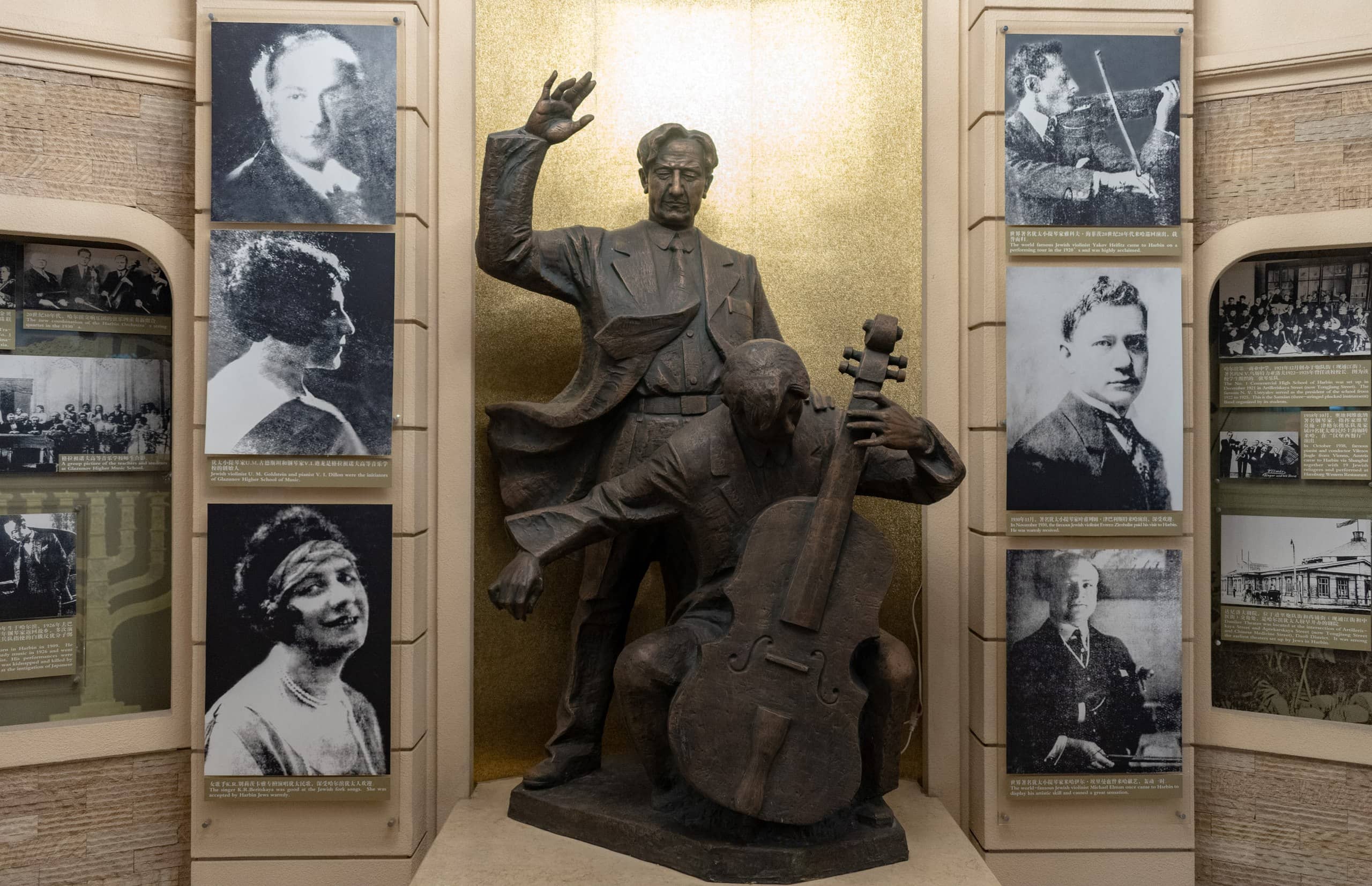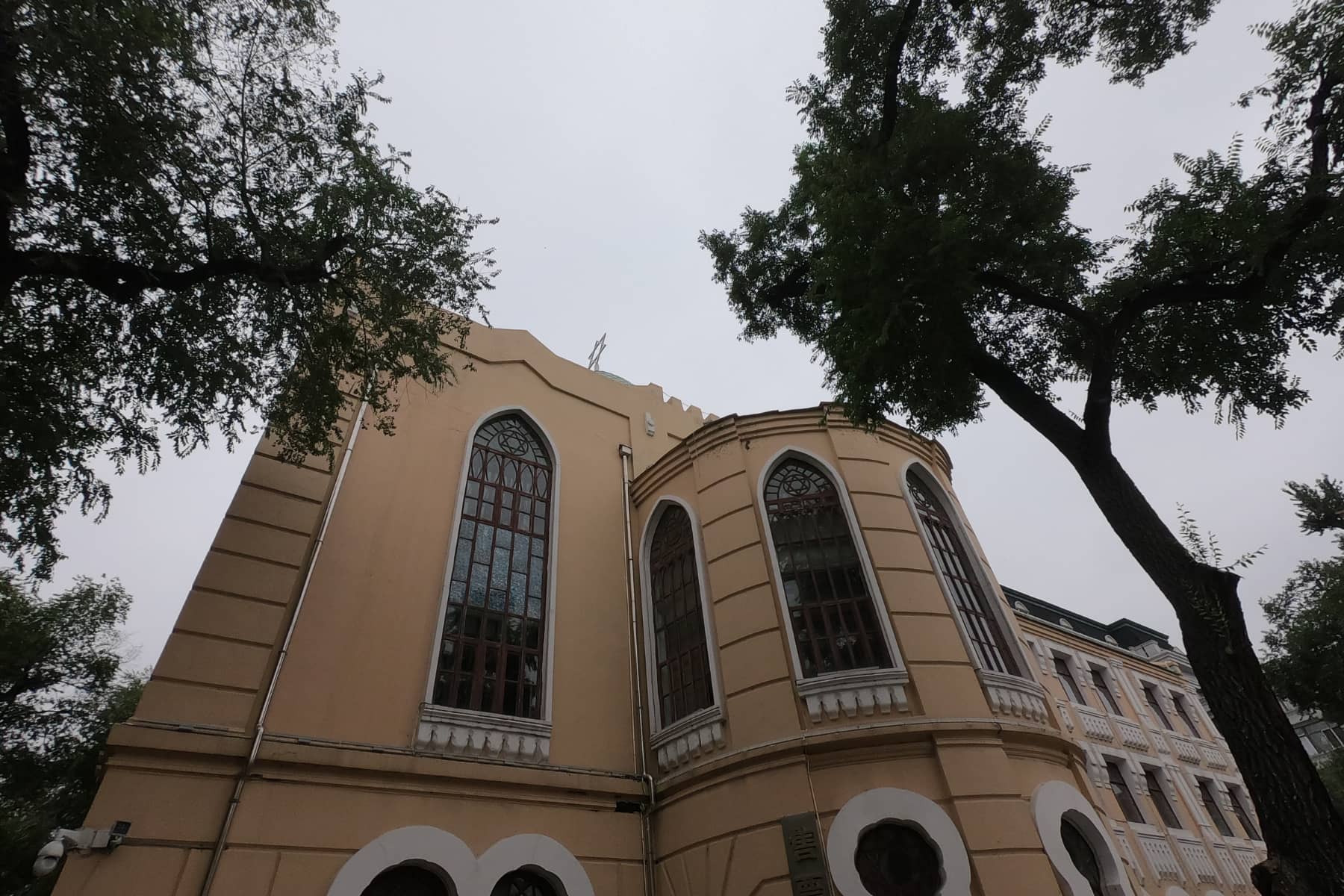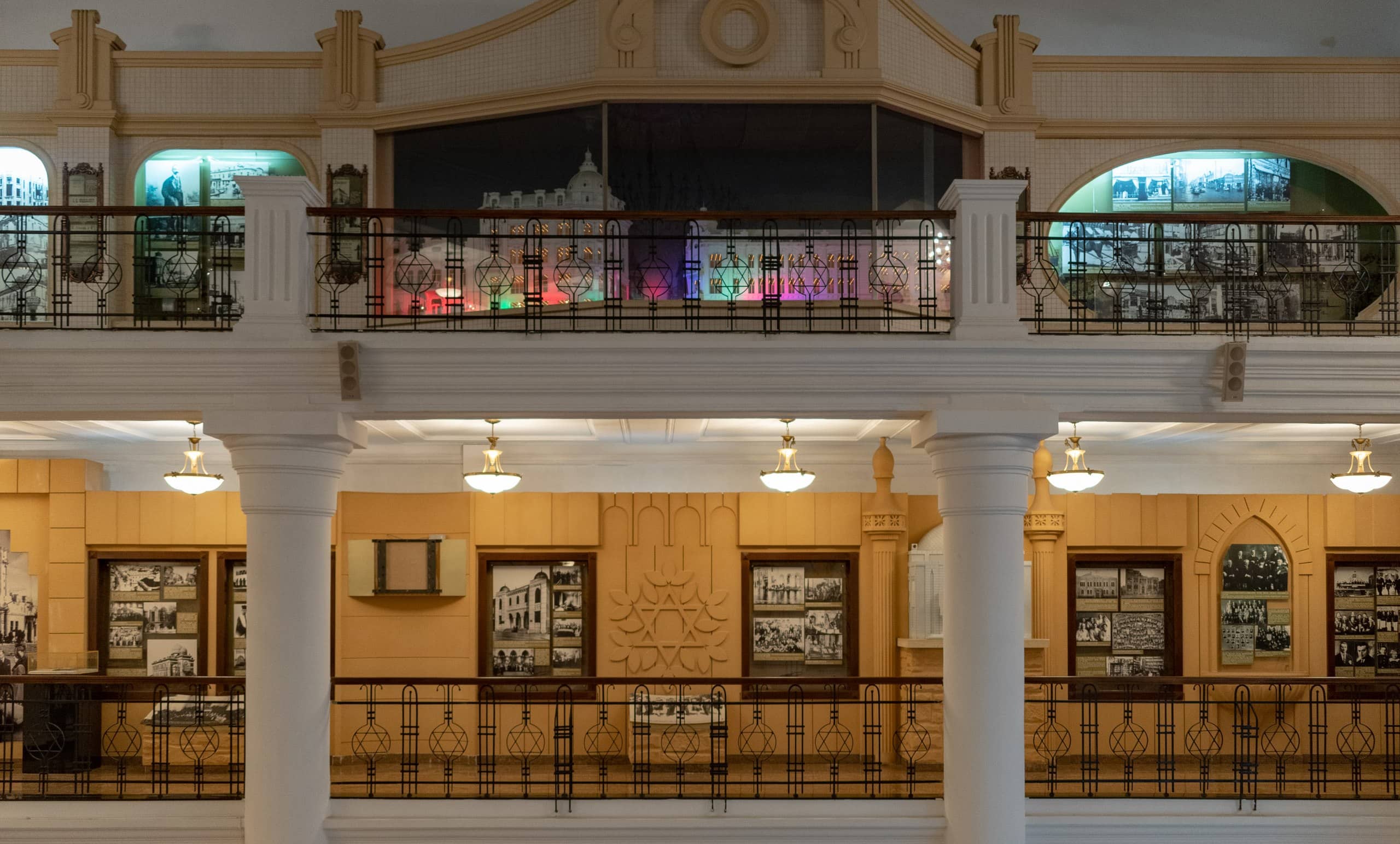The city of Harbin is the capital of Heilung Kiang province in northern Manchuria, northeast China. The city’s development began with the invasion of the Russians in Manchuria in the 19th century when the Russo-Manchurian treaty allowed Russia to build the Chinese Eastern railway. During this time Harbin became the center of the railway project and the chief engineer of the building board was a man named Alexander Yugovich who was born into a Jewish family but later converted to Christianity. When the line opened for traffic in 1903, many Russian Jewish families moved into Harbin where they were granted a better status than they had in Russia. The Karaites and Jews, both minority groups in the city, were granted plots of land on the outskirts of the city and were allowed to establish businesses.

Credit: xiquinhosilva from Cacau, CC BY 2.0 <https://creativecommons.org/licenses/by/2.0>, via Wikimedia Commons
In 1903 the Jewish community of Harbin had around 500 residents and this number quickly grew to 8,000 by 1908. The community decided to build a synagogue which they called the “Main Synagogue” and it took just under 2 years to build. Today, the synagogue can be found on Tongjiang street, Daoli district. The community also established the first Jewish cemetery in China in 1903, which later had more than 2,000 tombs. Within the community several businesses flourished including a hospital, several clubs, and an elderly home. The hospital provided care for the Jewish residence as well as much of the general population. Thought the town also had a religious elementary and secondary school, many of the Jewish students attended non-Jewish schools due to lack of classes.

Following the outbreak of World War I in November 1914, Harbin’s Jewish community joined the Jewish Committee for the Help of War Victims. This organization was active until 1920, but it was able to help over 200,000 war refugees have access food, dormitories, hospitals, and professional courses. After World War I, the Jewish community had an influx of Jewish refugees and the population peaked to 10,000 or 15,000 by the early 1930’s. However, the population quickly declined to about 5,000 1939. The population continued to thrive after the war and a new synagogue, a Jewish library, a new hospital, a school for women, a Jewish National bank, and another Jewish secondary school were established.
Because Harbin was well-known as being a cultural center, many famous Jewish actors came to perform in Harbin. Twenty Jewish newspapers were established between 1918 and 1930 and several youth clubs associated with the Zionist movement were created. Between 1921 and 1925, several youth groups from the HaShomer HaTzair Zionist movement emigrated to Palestine and the Harbin branch of the HaShomer HaTzair was set up in 1927. In 1929, Betar, the Zionist youth movement, was founded by a large group of former members of the HaShomer HaTzair movement. When Zionism was outlawed in the Soviet Union, Harbin because a hub of Zionism and another wave of Jewish immigration occurred with the Soviet Union’s New Economic Policy (NEP) in 1925. In December 1937, Harbin held the first of three Zionist conferences for Jewish communities in the Far East.
Under Russian rule, the Jews community of Harbin enjoyed the same rights as all other foreigners but there was an economic crisis in 1928, when the Chinese Eastern Railway was handed over to Chinese, and many Jews left Harbin. The Jews who left went to Shanghai, Ten-Tsin, other cities in China, or the Soviet Union. The good living conditions of the Jews in Harbin quickly changed when the Japanese took control of Manchuria and establishment of a puppet regime, which allowed Jews to be subjected to terror and extortion.
When World War II began, Jews in Harbin became even more oppressed and anti-Semitic politics were put in place. Under Japanese rule, the Zionist youth movements helped to keep Jewish national life alive; with the help of Betar and Maccabi, Jewish cultural activities continued to be organized. Four synagogues had been established until 1950, but many Jews left Harbin at the outbreak of the war. They emigrated to the United States, Australia, Brazil, and other countries. Between 1945 and 1957, Harbin was under Soviet control and many Jewish leaders were arrested and sent to the Soviet interior. After the war ended, most of the Jewish in Harbin left and even 3,500 settled in Israel and established their own society of Chinese Jews. The cemetery was moved to a new location during the 1960’s and the last Jew in Harbin left in 1985.

Credit: xiquinhosilva from Cacau, CC BY 2.0 <https://creativecommons.org/licenses/by/2.0>, via Wikimedia Commons
Most of the Jewish sites have been left intact or have been renovated and there are two synagogues, a rabbinical school, and the largest Jewish cemetery of the Far East with about 700 gravestones, for visitors to see. The new Synagogue has been converted into the Harbin Museum of Jewish History and Culture which is open year round to tourists and locals interested in the rich history of Jews in Harbin. The old synagogue was recently renovated into a concert hall, known as the Old Synagogue or Laohuitang Concert Hall.

